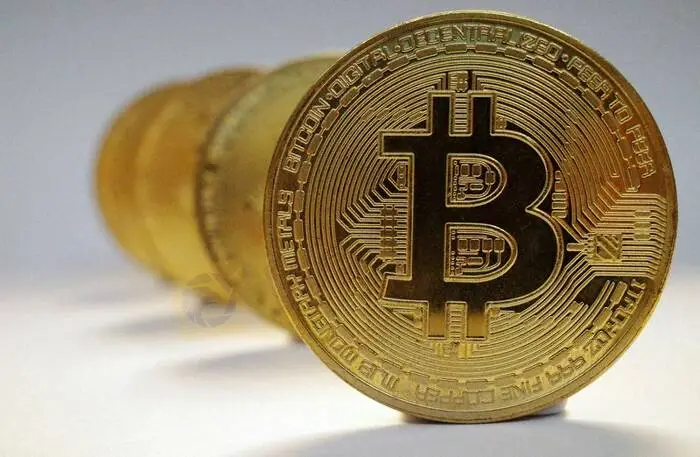简体中文
繁體中文
English
Pусский
日本語
ภาษาไทย
Tiếng Việt
Bahasa Indonesia
Español
हिन्दी
Filippiiniläinen
Français
Deutsch
Português
Türkçe
한국어
العربية
Bitcoin could be laid low by miners malady
Abstract:The cryptocurrencys spectacular rally in 2021 drew thousands of entrants into mining, or producing new coin. As a result the hashrate, or combined computational power used by bitcoin miners globally, has roughly quadrupled over the past six months to blow past 200 million “terahashes” per second.

Bitcoin miners are feeling the heat – and the pains rippling downstream to pressure prices.
But whats that got to do with the price of bitcoin?
A rising hashrate makes it becomes harder for miners to earn coin and cover their costs of hardware, electricity and staff – so many are more likely to sell, rather than hold, their newly minted cryptocurrency, exerting a bearish force on the market.
“Running costs are a major factor in miners‘ decision to hold or sell newly acquired coins. They are the first and most natural sellers in the crypto space and so definitely impact prices,” said Justin d’Anethan, institutional sales director at crypto financial services firm Amber Group.
The total value of coins held in miners wallets has fallen to around $75 billion from $114 billion at the start of November, as their profitability has been squeezed by the rising hashrate as well as falling prices, according to Oslo-based crypto research firm Arcane Research.
Miners have been transferring more coins to exchanges than adding to reserves, according to crypto industry analytics firms, a sign of selling or intent to sell.
Such flows are adding to pressures facing bitcoin, whose drift towards the mainstream has seen it caught up in a selloff in global markets driven by tensions on the Ukraine border and the Federal Reserves policy tightening.
The worlds dominant cryptocurrency is trading at about $37,400, which is 40% below its Nov. 10 high of $62,000.
WHAT IT COSTS
Bitcoin mining, in simple terms, is the process by which a network of computers checks and validates a block of transactions that then get added to the blockchain. Miners get rewarded for completing a block.
It‘s an expensive business, though, requiring not just sophisticated and fast “rigs” costing upwards of $10,000, but also a huge amount of power. And it’s getting pricier.
The seven-day average of total mining cost per transaction validated has fallen to $176.8 from a record $235.57 hit in May last year, data from blockchain.com shows.
“As more miners join the network, each individually earns fewer bitcoin. This is because network difficulty increases in order to slow the issuance of new bitcoin,” said Joe Burnett, analyst at infrastructure and mining firm Blockware Solutions.
Waning mining profitability is also hitting the broader market because some institutional investors, who are unable or unwilling to invest directly in cryptocurrencies, instead buy shares of listed miners or ETFs that track miners as an alternative way of gaining access to the young industry.
Shares of U.S.-listed crypto miners Marathon Digital Holdings and Riot Blockchain have plunged 66% and 52% respectively since early November.
The Valkyrie Bitcoin Miners ETF is meanwhile trading at a roughly 5% discount to its net asset value since the funds launch in early February, and the Viridi Clean Energy Crypto-Mining & Semiconductor ETF has lost 23% since the beginning of the year.
THE LAST BITCOIN
Some of the pressures on miners flow from bitcoins inherent structure. The decentralised blockchain was created anonymously with a final limit of 21 million coins, of which nearly 19 million has already been minted.
It takes around 10 minutes to mine one block and the reward for miners – who currently get 6.25 bitcoin per block – is halved about every four years.
“There could be one miner or a million, it doesn‘t change anything. There’s only one block and a set number of bitcoins issued,” said dAnethan at Amber Group.
A final note: don‘t lose sleep fretting about what will happen when the last bitcoin is mined – that’s not expected until the middle of the next century, 2140 to be exact.

Disclaimer:
The views in this article only represent the author's personal views, and do not constitute investment advice on this platform. This platform does not guarantee the accuracy, completeness and timeliness of the information in the article, and will not be liable for any loss caused by the use of or reliance on the information in the article.
Read more

Will the Euro and US Dollar Reach Parity in 2025?
Euro-dollar parity sparks debate again as 2025 approaches, with multiple factors shaping the exchange rate outlook.

US Dollar Surge Dominates Forex Market
The global forex market continues to show volatility, with the U.S. dollar fluctuating last week but overall maintaining a strong upward trend. How long can this momentum last?

Oil Prices Soar for 5 Days: How Long Will It Last?
Last week, the global oil market saw a strong performance, with Brent crude and WTI crude prices rising by 2.4% and around 5% respectively. Oil prices have now posted five consecutive days of gains. But how long can this rally last?

How Big is the Impact of the USD-JPY Rate Gap on the Yen?
The U.S. Federal Reserve's repeated rate cuts and the narrowing of the U.S.-Japan interest rate differential are now in sight. So, why is the U.S.-Japan interest rate differential so important for the yen’s safe-haven appeal, especially when global economic uncertainty rises?
WikiFX Broker
Latest News
SQUARED FINANCIAL: Your Friend or Foe?
Big News! UK 30-Year Bond Yields Soar to 25-Year High!
High-Potential Investments: Top 10 Stocks to Watch in 2025
Why Is Nvidia Making Headlines Everywhere Today?
Discover How Your Trading Personality Shapes Success
US Dollar Insights: Key FX Trends You Need to Know
FINRA Charges UBS $1.1 Million for a Decade of False Trade Confirmations
BI Apprehends Japanese Scam Leader in Manila
Bitcoin in 2025: The Opportunities and Challenges Ahead
Join the Event & Level Up Your Forex Journey
Currency Calculator






